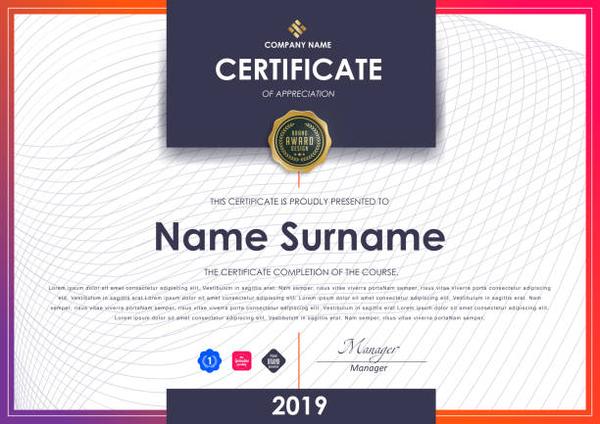Students can earn online degrees and pursue a top-quality education in a schedule that work with their lifestyles. Some companies have used fake degrees to recruit employees. How can your company defend itself against degree fraud?
Online degree verification services are a good way to confirm your degree. These services search for degrees on public databases. The university can be contacted to verify the authenticity of a diploma.
Digital Verification Systems
Online-based businesses require digital identity verification systems. They are used in a range of industries ranging from finance, healthcare and commerce. They allow platforms to cross-reference ID documents to various data sources without requiring users to take part in the verification process. This layered approach is a challenge to fake credentials with false data.
Alongside evaluating the physical authenticity features of a degree, it is crucial to pay attention to spelling mistakes. Documents that is written by someone who has no formal training is an indication of fraud. Additionally, you should also be looking for a guilloche feature – a geometrical pattern with a raised effect which is often found on banknotes and is one of the most reliable indicators of genuineness.
Fake degrees are a major threat to higher education. It is essential to be able to identify these fake degrees in order to stop the entry of fake degrees into. It is crucial to increase awareness about this issue among educators and students.
Blockchain Technology
The blockchain is a digital ledger, open-source, that is secure and tamperproof. It stores a record of transactions on a series of computers on the network. It can be used to verify details, including levels, through cryptography.
Companies such as BCdiploma make use of the technology to provide online tools for sharing, storing and confirming academic credentials. It’s easy to share certificates and qualifications. This can also reduce time since universities and similar institutions don’t have to send duplicate diplomas.
Blockchains also help stop fraud, the financing of terrorism and money laundering. The blockchain keeps track of every transaction, which allows authorities to track their activities. And because the blockchain is unchangeable and secure, it is much harder to alter certificates and documents which contain vital details about individuals. It’s also why it is an essential tool to stop fraud at work.
Advanced Document Techniques to Authenticate Documents
It is bad for your reputation, regardless of whether you’re an employer or employee, to employ an employee who claims to be qualified in a responsible position but does not have those qualifications. It could also leave your company liable if they cause harm to someone. This is why it’s crucial to be able to detect fake credentials and degrees before they’ve gotten too far into the hiring process.
The most common way that fraudsters fabricate fake degrees is to change the university’s name on the certificate. The scammers can alter the spelling, or even use a completely different language. In the United States, Latin phrases such as ‘cumlaude’, are often used as are the words used in UK universities employ ‘with honors’.
Another way to spot fake certificates is to check them against authenticated pictures of the genuine thing. Software that validates the authenticity of a document can assist you in this. It also looks for holograms, stamps signatures, as well as the forms of words. It also uses facial recognition to confirm that the person on the photo is the same as they were when they submitted the application.
AI and Machine Learning in Credential Verification
The industry of credentialing has seen a transformation thanks to the integration of the blockchain technology and artificial Intelligence. Blockchain is a secure digital ledger which ensures the security and authenticity of authentic credentials. Blockchain has revolutionized the way credentials are shared and distributed. It makes them safer for individuals and organisations.
Fake diplomas and certificates are a worldwide problem which is increasing. Millions of people all over the globe are impacted by this issue. This fraud is committed in a variety of ways, including fake universities and diploma factories that produce counterfeit degrees. These fake degrees are a major problem, as they put workers and members of the general public at risk. This is especially true for sectors such as construction or health care.
AI-driven systems can help prevent fraud of this kind by speeding up the verification process, and improving the user’s experience. Additionally, AI can detect a range of suspicious patterns that would otherwise be overlooked by manual inspection. Another benefit of AI is its capacity to learn and adapt when fraudulent actors alter their methods, thereby improving the overall security and accuracy of verification.
Verify your degree online with our tools
Employers take identifying fake diplomas extremely seriously. It can not only put the company in a negative light and hurts its reputation, it can also lead to financial losses. Human Resources personnel often conduct background checks prior to hiring candidates as well as checking their academic qualifications.
One of the most popular methods used to check an individual’s degree is calling the registrar’s offices of the school they claim to have graduated from. The office of registrars should be able to provide details on whether or not a graduate was a student at the school that they are referring to, what they did in their studies, and the year they were graduated.
Online verification tools are a quicker and easier option, as universities do not want to release personal information. These tools typically have vast databases and strong relationships with institutions of higher education, allowing them to conduct quick and accurate verifications. They also can protect the confidentiality and security of students by using secure portals. This reduces the risk of data leaks or unauthorised use.





